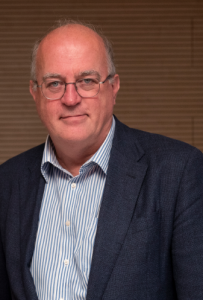‘VITAL, Boulot, Dodo’ a Blog by Baudouin Standaert
The current COVID-19 pandemic has a mixed impact on my life these days. ‘Metro, Boulot, Dodo’, a French sentence saying that life is limited to travel, work, and sleep, is no longer fully applicable. I can enjoy the obligatory situation of working from home. Life is enjoyable when working from the garden on a sunny afternoon. There is enough space in the house to organise my working space. I can concentrate better on my work. But is this way of living fully enjoyable? I also experience negative sides. Social contact is reduced, as people are afraid to talk to me because ‘you are the one working on a vaccine’. Most contacts must happen through video-channels with software that I have to master. Your internet connection is limited and you need to find the best place in house which, of course, is not at your desk. Your activities outside are banned. You need to wear a mask that irritates your skin when you wear glasses. How long do we need to remain in this situation,? Until my retirement soon or even longer? We always hear the answer ‘until THE vaccine’.
I am always intrigued by health projects that will change the world such as VITAL. I was pleased with the name selection of the project, as it reflects the positive stimulus. I tumbled into it via my friend, Giuseppe Del Giudice. A first meeting is always crucial for running the project smoothly. We started with Jim Janimak, Debby Van Baarle and Mark Bonten. It fitted from the start: No nonsense, being pragmatic and finding solutions based on a practical approach – ‘the Dutch way of working’. It went well at the VITAL kick-off meeting at the RIVM headquarters (the Dutch National Institute for Public Health and the Environment) in February 2019.
The COVID-19 pandemic fits in with our VITAL goals: to build the right approach against infectious diseases in aging adults. The project is like a big puzzle with many small pieces that need to fit together within the next four years. Making big puzzles is one of my hobbies. To be sure we come to the end result, you need an overall view and strategy and handle the difficult parts of the puzzle separately by colour, item, place. This is exactly what is happening in VITAL. Once finished we will be sure that we can bring an integrated program to each local authority in Europe on how to cope at best (most cost-efficient (or most vital?)) with infectious diseases in aging adults. VITAL is rich in many aspects: discovery, working together with different disciplines, spread over many domains in different places in Europe. But most importantly, working on a better future health of a group we will soon all belong to.




